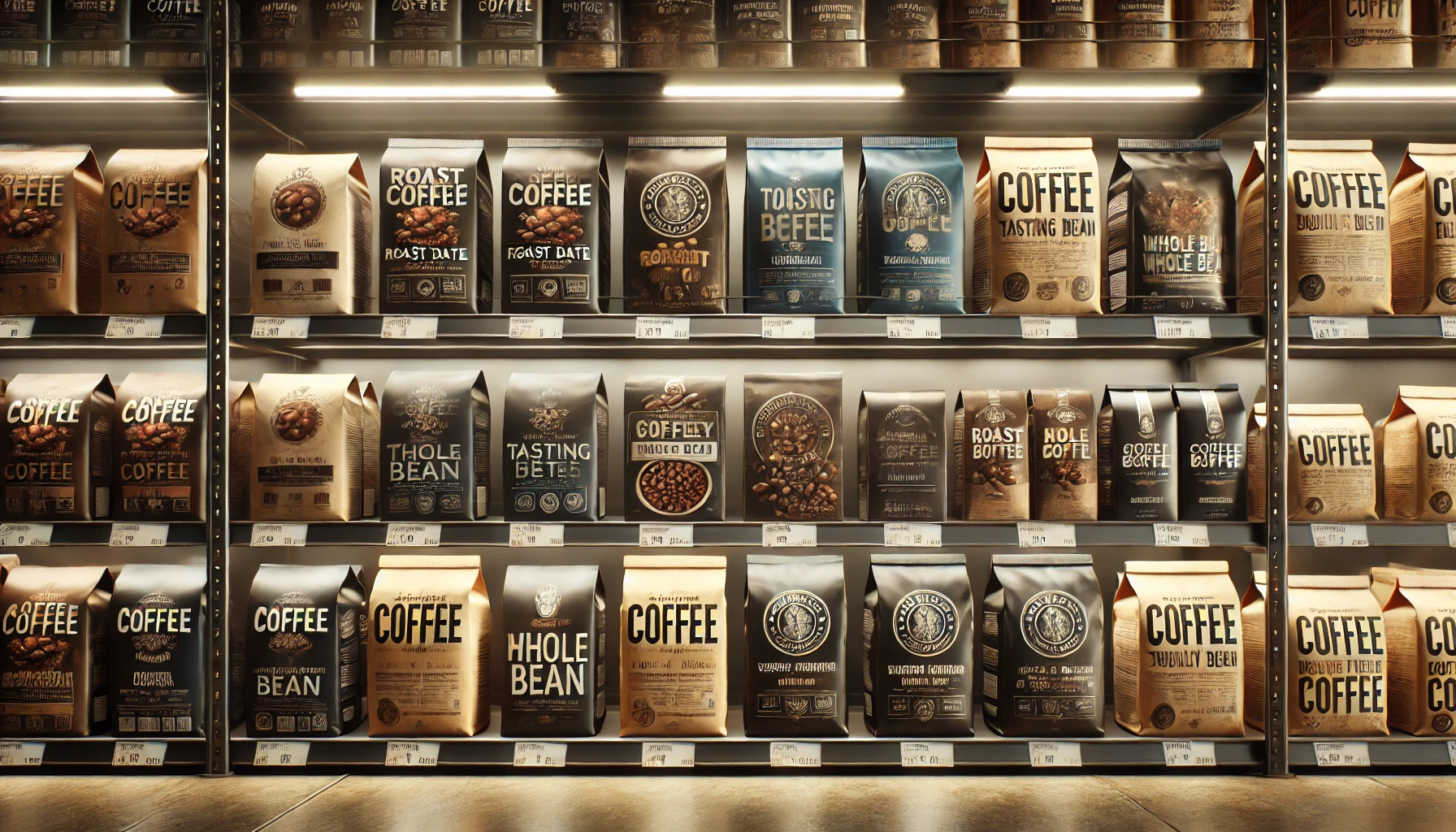Shopping for coffee at the supermarket can be overwhelming. With dozens of brands, shiny packaging, and buzzwords like “gourmet,” “premium,” and “100% Arabica,” how do you know which bag holds truly high-quality coffee?
The good news is: with a little knowledge, you can learn to identify great coffee even in a regular grocery store. In this guide, we’ll show you what to look for, what to avoid, and how to make smarter coffee choices on your next shopping trip.
1. Check the Roast Date
One of the most important indicators of freshness — and therefore quality — is the roast date.
Look For:
- A clear roast date, not just a “best by” or “expiration” date.
- Coffee that was roasted within the last 2 to 4 weeks.
Avoid:
- Bags without a visible roast date.
- Coffee that’s been on the shelf for months (especially if it’s pre-ground).
Freshness matters. Coffee loses its flavor quickly after roasting, so the more recent the roast date, the better.
2. Look for Whole Bean Coffee
Whenever possible, choose whole bean coffee over pre-ground.
Why Whole Bean Is Better:
- It retains freshness and aroma longer.
- You control the grind size, which improves brew quality.
- It typically comes from more quality-focused brands.
Investing in a simple burr grinder will instantly upgrade your at-home brewing experience.
3. Inspect the Packaging
Good coffee packaging does more than just look pretty — it preserves freshness and offers transparency.
Signs of Quality Packaging:
- One-way degassing valve (a small button or vent on the bag)
- Opaque, sealed bags that block light and air
- Resealable zipper or clip for easy storage
Bonus:
If the packaging includes specific details like farm name, altitude, processing method, and tasting notes, that’s a sign of a serious coffee brand.
4. Read the Label Carefully
Don’t fall for vague marketing terms like:
- “Gourmet”
- “Premium”
- “Mountain grown”
- “Rich flavor”
These don’t mean much without context.
What to Look For Instead:
- Origin (country, region, or even farm)
- Varietal or blend info
- Processing method (washed, natural, honey)
- Tasting notes (e.g., chocolate, citrus, floral)
- Roast level (light, medium, dark)
More information usually means more transparency and care.
5. Consider the Roast Level
The roast level affects flavor — but it also affects how long the coffee will stay flavorful.
- Light roast: Preserves origin flavor, often brighter and more acidic
- Medium roast: Balanced and versatile
- Dark roast: Bold, bitter-sweet, less acidic
Avoid coffees labeled only as “bold” or “strong” — this usually means dark roast without specifics.
6. Watch Out for Pre-Flavored Coffee
Flavored coffees (e.g., hazelnut, vanilla, caramel) are often low-grade beans masked by additives.
If you love flavor in your coffee, it’s better to:
- Buy a high-quality base coffee
- Add spices or syrups at home
This way, you maintain control over the ingredients and can enjoy cleaner, more natural flavors.
7. Look for Certifications (But Read Carefully)
Certifications can be a helpful sign of ethical or sustainable practices:
- Fair Trade: Supports farmers with minimum price and social premiums
- Organic: Grown without synthetic pesticides
- Rainforest Alliance: Focus on environmental and labor standards
Just be cautious:
Some certifications cost money to obtain, so small-scale producers may not have them — even if their practices are ethical and sustainable.
8. Research the Brand
Take a few minutes to Google the brand or visit their website:
- Do they provide sourcing information?
- Do they mention working with specific farms or cooperatives?
- Do they roast in small batches?
Brands that are transparent and passionate about coffee usually show it.
9. Choose Local or Small-Batch Roasters (When Available)
Some supermarkets now stock coffee from local roasters or regional micro-roasters — these are often fresher and better quality than big commercial brands.
Look for:
- Rotating selections
- Local branding and roastery info
- Labels with roast dates and batch numbers
10. Bonus Tip: Don’t Judge by Price Alone
Higher price doesn’t always mean higher quality. Some excellent coffees are affordable, while others rely more on marketing than substance.
Instead of price, prioritize:
- Freshness
- Transparency
- Flavor profile
- Brew method compatibility
Final Sip: Smart Shopping Means Better Coffee
Finding high-quality coffee at the supermarket is totally possible — it just takes a bit of label reading and attention to detail. Look for freshness, whole beans, informative packaging, and brands that are proud to share their story.
With these tips in hand, your next grocery store coffee run could lead to your best home brew yet.

